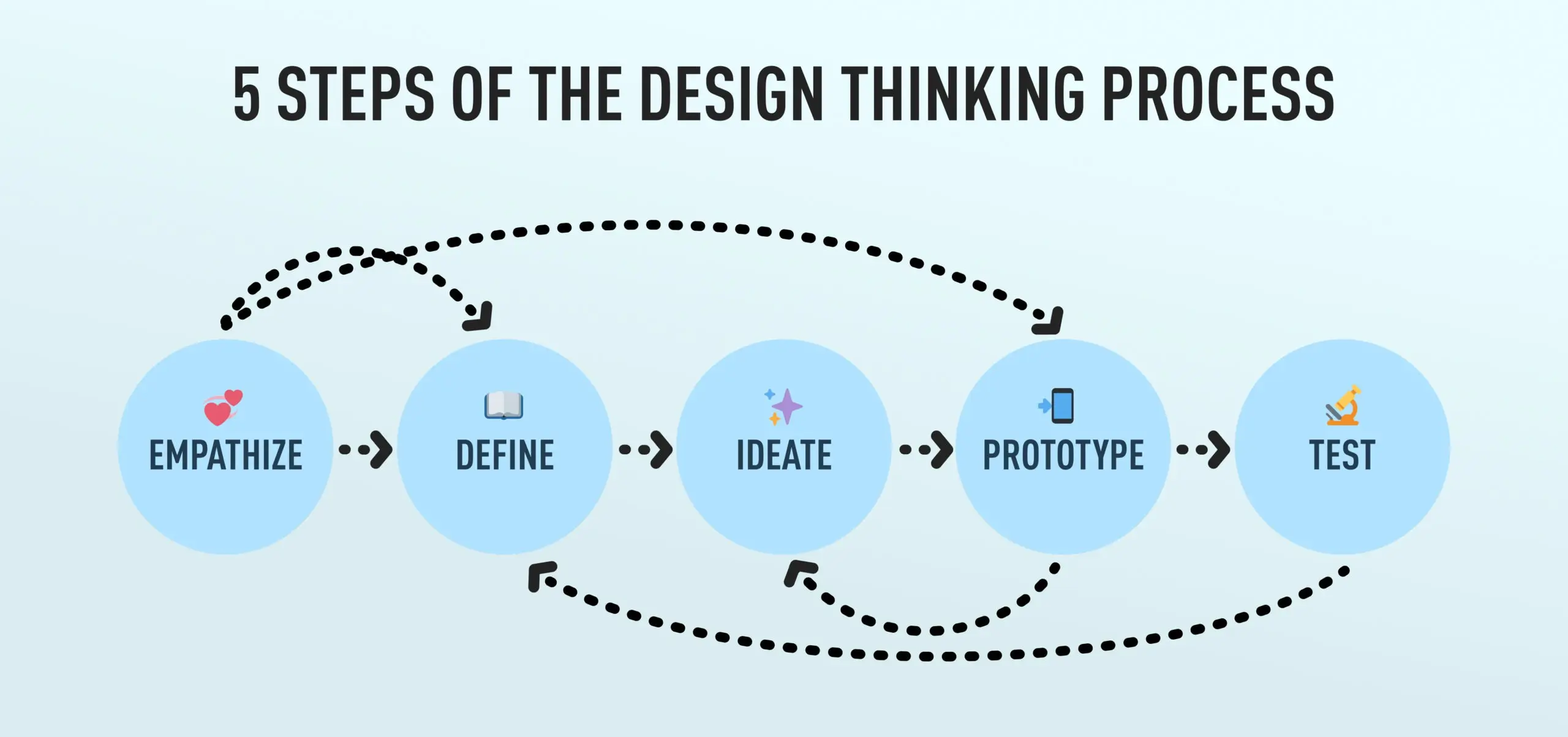Whether you’ve just googled “ux design” for the first time, or you’re already wondering if UX design might be a good direction to take your career, it’s essential to have a good grasp on the fundamentals of UX design.
Despite the relative popularity of the UX design industry, there is still a good amount of confusion around what UX design is and what UX designers actually do. To help clear this uncertainty, we’ve created this comprehensive, beginner’s guide to everything UX—a good “first taste” of UX design!
Here’s what we’ll cover:
- What is UX?
- The five main principles of UX design
- What do UX designers do?
- Benefits of UX design (and UX designers!)
- What’s next? Key takeaways
For a brief overview of what UX design is in the first place, check out this video before you dive into the rest of this guide:
1. What is UX?
UX design is rapidly revolutionizing the world around us and how we interact with products, businesses, services, and each other. It’s essential to creating usable and desirable products that help companies, consumers, and even whole societies find solutions to difficult or troubling problems.
But what exactly is user experience? And why does it matter so much?
First, let’s break down what we mean when we say, “user”—or better yet, who we mean. Simply put, a user is a person who purchases or interacts with a product, digital interface, or service. Therefore, a user experience (UX) is the series of events that occur when that person actually uses the product, digital interface, or service.
And UX design is the process of discovering user needs and designing solutions to meet them.
If UX design is the art of carefully curating the experience a user will have when interacting with a certain product or service, UX designers are the artists who do the work of creating that experience. That’s not to say that you need to be artistic in the traditional sense of the word! In fact UX designers cultivate a broad range of skills (including non-design skills) that have little or nothing to do with being “artsy.”
UX designers take into account many things when crafting a good user experience, not just aesthetics or impressive visuals. They must consider the usability and accessibility of the product, as well as a variety of design principles, usability heuristics, and information architecture. And let’s not forget the importance of understanding users’ expectations (discovered through user research) and factoring in business goals (with a solid UX strategy).
2. The five main principles of UX design
There are many important principles within UX design but to simplify things a bit, we’ve broken them down into five main concepts: Empathy, strategy, usability, inclusivity, and validation.
Empathy
Quality UX design puts users’ needs at the forefront of product development. To understand the user and what obstacles they face, UX designers must practice empathic design. With empathy, designers are able to put themselves in the user’s shoes and learn about their daily life, what problems they need solved, what expectations they have when interacting with certain products, and what a good experience looks like to them.
Strategy
Designing effective solutions to difficult problems can be a complex process. Therefore, a crucial part of UX design is having a well-defined plan and set of goals before starting any project. Many designers will craft a UX strategy that outlines a variety of UX objectives including chosen research methods, preferred design and testing systems, and what success looks like for both the user and the business. While an important guideline to follow, a UX strategy is not unchangeable and may be amended as designers move through the design process.
Usability
In a world of rapidly advancing and sometimes confusing technology, consumers often lean towards products that take little brain power to operate. The last thing a user wants is to feel like ordering food delivery on their phone is equivalent to completing a 1000 piece puzzle. A big part of UX design is making products and services that are simple and intuitive to use for people of all ages and abilities. To do this, designers take into account things like behavioral psychology, accessibility, affordances, and mental models when designing for optimal and effortless usability.
Inclusivity
A common phrase you may hear in the UX industry is “design for all”—meaning that our design efforts should take into account the needs of people of all races, ages, genders, backgrounds, socioeconomic statuses, and more. UX designers have the ability to shape the world around them through their designs and the power to solve complex problems that affect a wide range of individuals.
Exemplary UX design incorporates the experience and needs of under-represented or oppressed groups of people and can even find solutions for their unique problems.
Inclusive design ensures a variety of voices are being heard when designing for diverse populations.
To learn more about inclusive design, check out these guides:
- Inclusive design vs. universal design: What’s the difference?
- 7 Principles of universal design that will make your UX more inclusive
- How to design for every gender
- How to write inclusive copy
Validation
However impressive a design may seem, it would mean nothing if not validated by user testing. One of the most crucial aspects of UX design is to test proposed solutions with the people who will actually be using them in real life.
User feedback guides and informs the design process and helps ensure that the products being made are ones people will happily want to use. Even after products are released, designers are constantly using methods to assess their success and where improvements can be made.
3. What do UX designers do?
A UX designer’s toolkit is extensive and their skillset is typically quite broad. On a day-to-day basis, UX designers complete tasks like user research, usability testing, sketching wireframes and prototypes, running focus groups, or presenting their work to stakeholders.
To understand a bit more about what UX designers do, let’s look at the UX design process:

Empathize
Empathy is key—and user research is essential to finding that understanding and connection to your users’ needs and goals. So the first step is to conduct extensive and inclusive research about the people who will be interacting with the product. There are many ways designers can learn about their users. Here are a few:
- Surveys
- Interviews
- Focus groups
- Observation
- Ethnographic field studies
- Analytics
- Eye tracking
- Customer feedback
- Desirability studies
To learn more about user research, check out these guides:
- What is user research?
- Beginner’s guide to qualitative UX research
- How to conduct inclusive user research
- The best remote UX research tools
Define
After they’ve come to understand their users needs and goals, UX designers figure out and define what problems need solving, and set direct guidelines for the tasks ahead.
Here UX designers get a clear idea of the project their client or employer has for them and what the goals for the business are. Designers may also collaborate with their design teams and come up with an effective approach to creating design solutions.
Once designers have a comprehensive idea of their users, they’ll present their findings in the form of a user persona—an archetypical person that represents the needs and behaviors of the larger population. They may also come up with a user journey map to visually represent the ideal customer experience.
These are two common deliverables that help define user needs and design opportunities in a more visual manner. To learn more about common UX deliverables, check out these guides:
- What is a persona?
- How to define a user persona
- Beginner’s guide to user persona spectrums
- 5 Steps to create your first user persona
Ideate
This stage often happens recursively throughout the defining, prototyping, and even testing stages—you discover user needs and your imagination starts coming up with ways to solve those problems! But skilled UX designers also know how to come up with ideas in systematic ways. Ideation often happens, then, in a design thinking workshop. There are also a wide variety of design thinking exercises that help UX designers (and the people they collaborate with) to generate innovative and delightful solutions to design problems.
Prototype
Now, it’s time to put pen to paper and start designing! This is the phase that most people think of when it comes to UX design as it involves the actual creation of the product or service. Designers create mockups and prototypes to initially test their ideas to make sure they’ll actually work as intended.
In later stages, UXers create wireframes to ensure that the ideas are translated well from design to development—and then out into the world and in the hands of users.
To learn more about prototyping and wireframing, check out these guides:
- How to create your first wireframe
- Wireframe, prototype, or mockup—what’s the difference?
- The best free wireframing tools for UX designers
Test
As we’ve already hinted, no UX design process is complete without testing your design solutions to ensure that they’ll actually work the way you intend!
So, now that a design has been created, it’s time to test that design against actual users with usability testing. Designers will observe their users interact with their designs and ask them to complete certain tasks or sort information. They take note of the user’s emotions, body language, statements, frustrations, and difficulties they have when using the product.
After testing, designers compile the data, analyze it, and determine what improvements need to be made.
Then…iterate!
The UX design process is a cyclical one meaning that once the designs have been created and user feedback has been obtained, it’s time to repeat the steps again.
With each cycle of the design process, designers take what they’ve learned from previous ones and address new problems, make meaningful improvements, and design more effective solutions. Even after product release, designers will continue to obtain user feedback and iterate upon their original designs.
4. Benefits of UX design (and UX designers!)
UX designers are an invaluable addition to a wide range of industries in product development and beyond. So why does UX matter and what do UX designers really accomplish? We’ve narrowed it down to these five major points.
Attention to UX design boosts customer acquisition and retention
A valuable and enjoyable user experience does a lot for attracting and keeping loyal customers. UX design can help a company’s products, mobile apps, and websites operating with minimal friction and ensure they appear modern, trustworthy, and on par with current trends—all things that help bring customers in and keep them engaged.
Good UX maximizes revenue
When a user is satisfied with their experience with a brand, not only will they continue to use it or purchase more, they may also share their positive experience with their peers. Organic engagement and word-of-mouth advertisement can do wonders for a company’s profit margin. UX designers are trained to figure out what user’s want and how to design for higher conversion rates making the potential for increased sales quite high.
Great UX designers help keeps development costs in check
UX designers are trained to find optimal solutions for both the user and the business. Their approach to problem solving and design is carefully planned and backed by evidence from user research. Therefore, with a UX designer on board, many companies can keep development costs low and minimize wasted resources as there is less need for re-design and troubleshooting.
UX designers can help increase company productivity
Sometimes the user a designer is creating for isn’t a customer but rather company employees. Businesses may hire UX designers to help streamline business processes, optimize company policy, or re-design employee software that’s easier and more efficient to use. Smoother workflow often leads to increased employee productivity, motivation, and overall better company function.
Ultimately: UX improves users’ quality of life
UX design has the potential to solve complex problems that plague underserved populations, troubled societies, or people in high stress careers.
UX designers have been called upon for improving individuals access to healthcare, education, housing, food, and more. The ability to make a positive, meaningful, and long-lasting impact on people’s lives is a big part of what makes UX design such an attractive career choice.

5. What’s next? Key takeaways
There’s a lot to know about UX and this article is just the tip of the iceberg. There’s increasing demand for UX designers—tech professionals who are highly skilled in research, empathic design, prototyping, usability testing, and more. This is party because the UX design skillset is so broadly useful to business and because it so specifically benefits the people who are paying for products and services.
If you’re interested in learning more about UX design, check out our online Intro to UX Design Course where you’ll learn about the UX design process in-depth—from concept ideation to product delivery. During the course, you’ll put the fundamental UX knowledge you’ll learn to use as you create your very own app design.
You’ll also have access to exclusive UX design events and webinars as well as our seasoned tutors and mentors who will work 1:1 with you to provide personalized feedback and expert advice on life as a UX designer. If you’re not quite ready to put money into a course or training, there are many free UX training resources that can help you explore a little further.
The field of UX design is flourishing and with consistent study for 15-20 hours per week, you can earn your first certificate in UX design in just one month. You’ll work with your very own tutor and mentor putting your knowledge of UX design theory to practical use, boosting your design skills and career potential.

